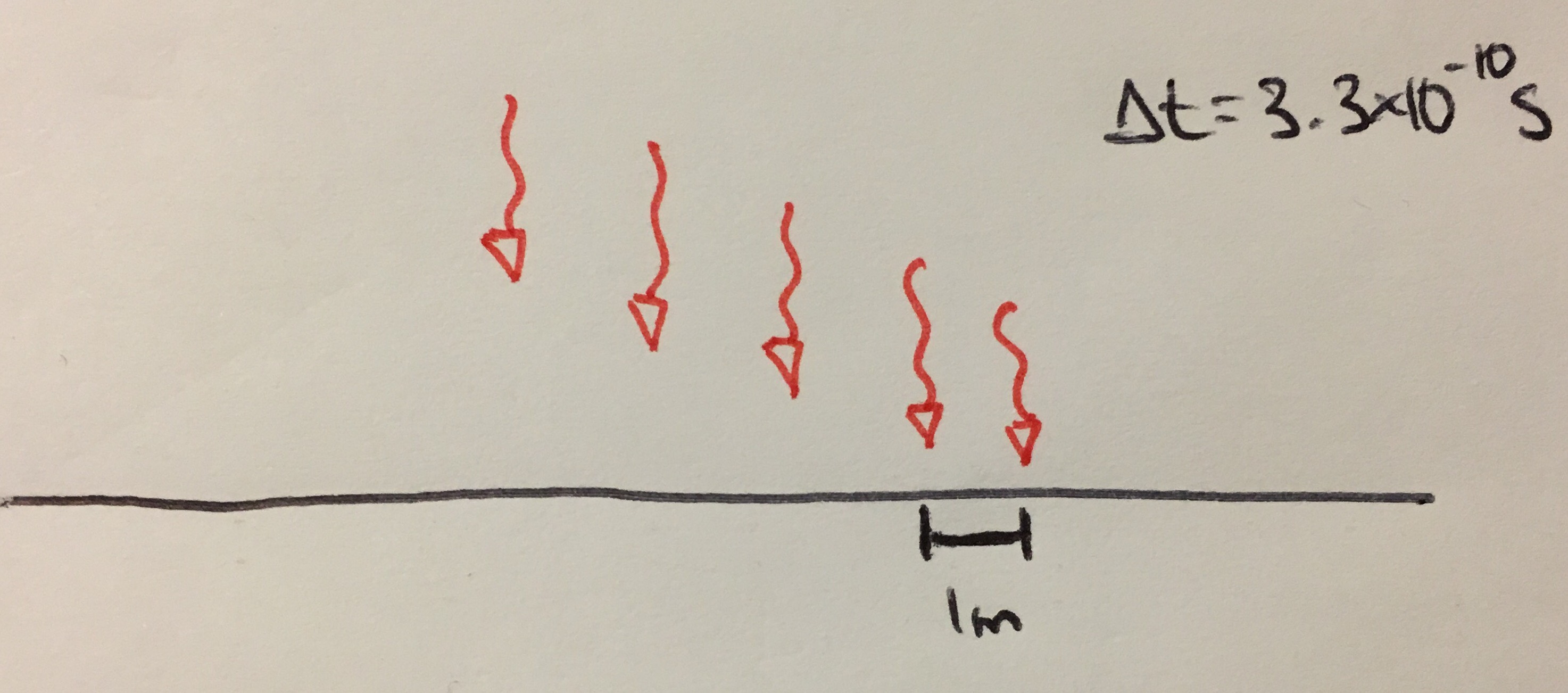Sixty Symbols recently released a video about superluminal motions (https://youtu.be/IsEDigUHsOQ).
This sparked a question I hadn’t considered before – although, I’m fairly sure it must be rather common amongst physicists (thus, the answer might be obvious).
Context:
We are in a spaceship orbiting the moon. We shine a beam of light out the window onto the surface of the moon. This beam is luminous enough to be visible with our naked eyes even from the spaceship. So, if we were to abruptly swing the source of the beam (say, a very powerful torchlight) then we would see the beam rush at a really amazing speed on the surface of the moon.
In fact, if we swing the torchlight fast enough, in practice, the beam should rush across the surface of the moon faster than light – which is amazing, but also very okay, as in this exercise, there isn’t any physical object moving faster than light.
$$ $$
Question:
Why? The explanation I’ve been receiving isn’t very clear, and I’m in fact somewhat confused by it. If we observe a light beam moving faster than light on the surface of the moon, then clearly, the particles forming this light beam are moving faster than light, right? Obviously, no, so I’m missing some detail.
Please note that I do understand there are superluminal illusions that can explain some related examples, such as for instance, activating multiple aligned light sources, in a very synchronized way, to make an outside observer see an apparent single FTL moving source of light. I’m however not seeing how this phenomenon explains the above question.
Further question:
Let’s say we place a tiny opaque disc in front of the torchlight, such that a shadow is cast inside the beam of light on the surface of the moon. Now, if we move the disc fast enough, then the shadow cast inside the beam of light on the moon should move faster than light (I supposed – do correct me if I’m wrong).
In principle, why could we not use this faster than light moving shadow to transmit some information from, say, one end of the beam on the surface of the moon to the other end, at an FTL speed?

